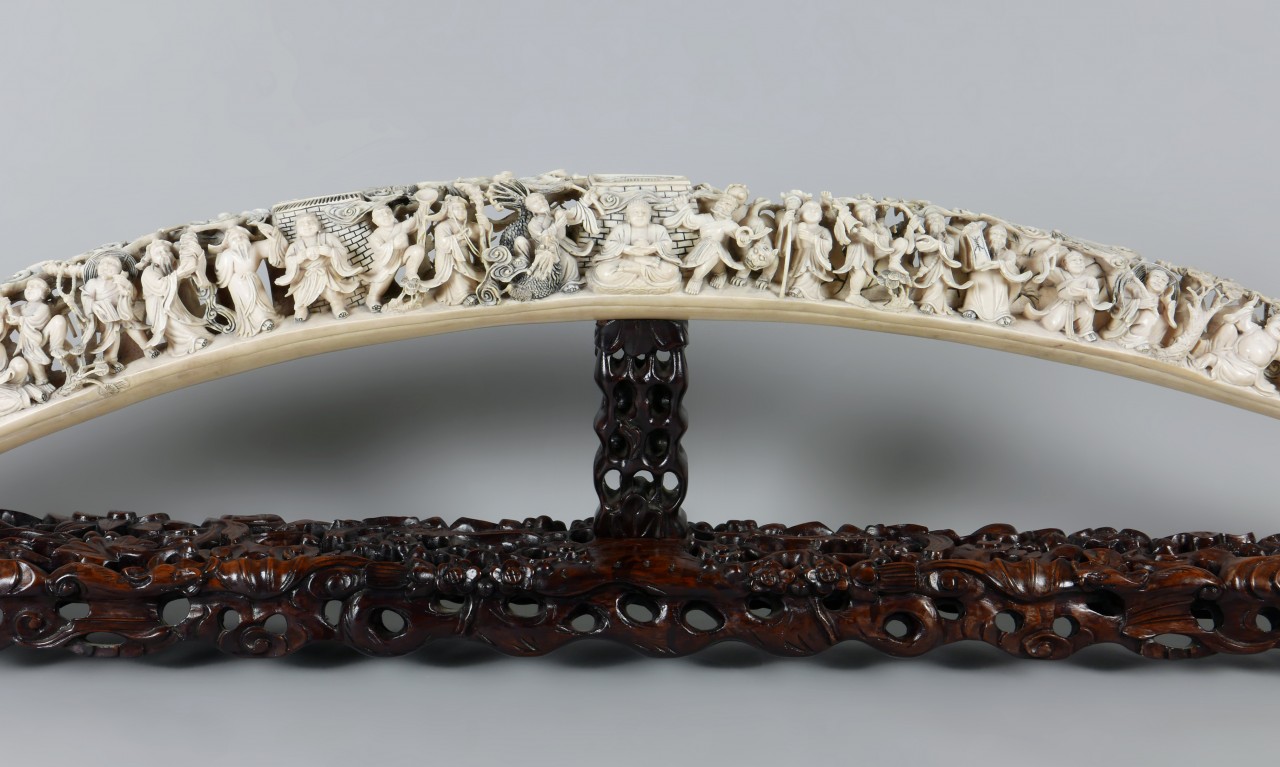 |
Carved Tusk, late Qing dynasty to Republic of China (1870-1949)
China
Ivory; 69 1/4 in.
34475-34476
Gift of Vernor G. and Edith P. Rich |
Relephant Information
Ivory remains a hotly debated topic for museums. The rampant poaching of endangered elephants has rightfully led to international bans on the trade of ivory, but many museums around the world house wonderful collections of historic ivory carvings. As part of our human story, the artworks carved from this medium need to be shared rather than consigned to storage rooms as long as people are aware of the devastating cost that his beautiful artform has had on elephant populations. The Bowers Museum prepares to reopen its Ancient Arts of China: A 5,000 Year Legacy exhibition this weekend, and on this occasion the Bowers Blog looks at some of the objects made from ivory in the exhibition, exploring the history of the medium in the country as well as the significance of the individual carvings.
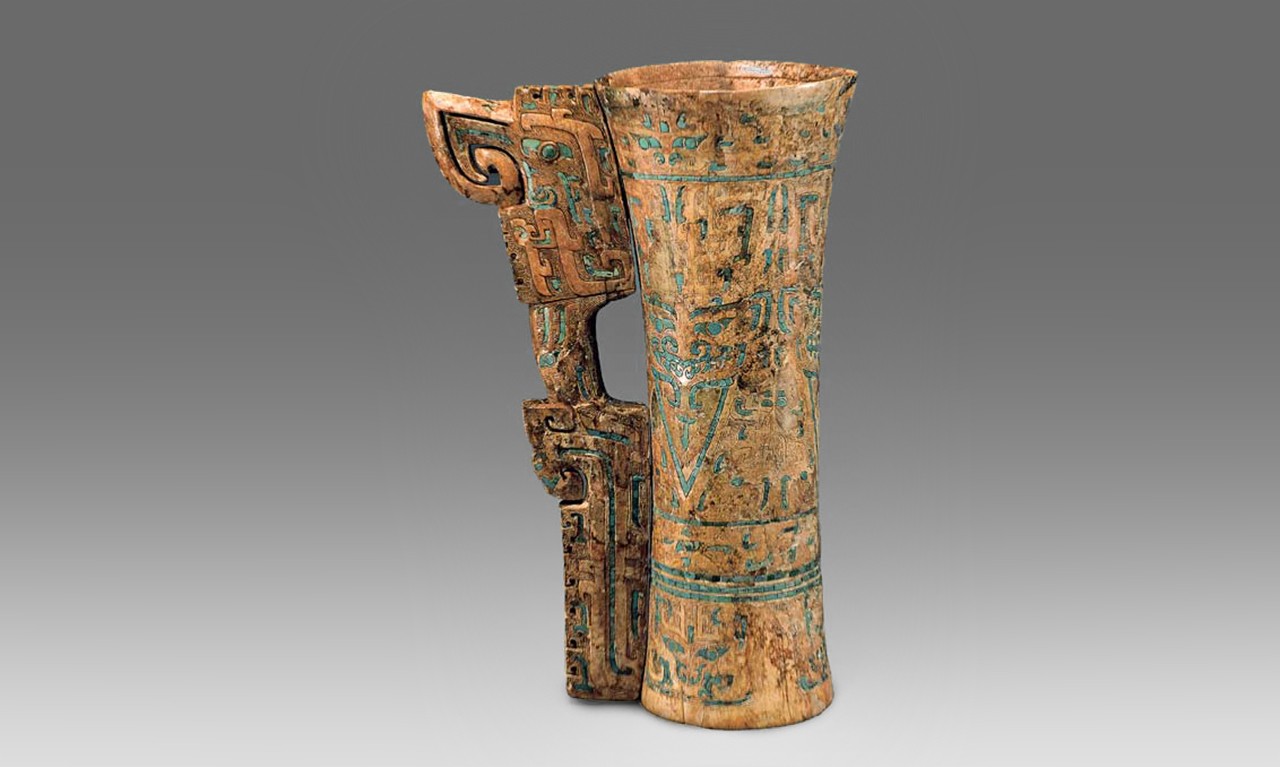 |
| Shang Dynasty ivory cup unearthed from the Fuhao Tomb at Yin Ruins, Anyang, Henan; Housed in the National Museum of China |
Trunkated History
Ivory carvings in China date to a time when elephants freely roamed the basins of the country’s Yellow River. The earliest examples have been found in Shang dynasty (1500-1050 BCE) tombs. These pieces were carved in such significant detail as to indicate that there is an unevidenced tradition of ivory carving which had its roots in China’s Neolithic period. Whenever the first ivory carvings were made, the tradition developed significantly during the Zhou dynasty and into the earliest imperial dynasties when small pendants were worn as markers of rank. This practice continued through the Song dynasty by which times elephants had been hunted into all but the most remote region of China. Fortunately, the trade along the Silk Road was already well established by this time and Arab traders in Zanzibar assisted in replacing the supply of Asian elephant ivory with African elephant ivory. There was a major revitalization of ivory carving in the Ming dynasty which would come to be seen as the golden age of the art. Much of this artistry carried into the Qing dynasty, but quality of individual pieces generally began to fall due to the increased pressure for ivory exports to Western countries. Elephant ivory remained legal in China until it was outlawed towards the end of 2017. In the wake of this, some contemporary Chinese carvers have moved to practicing their art on mammoth tusks unearthed in the icy tundras of Russia.

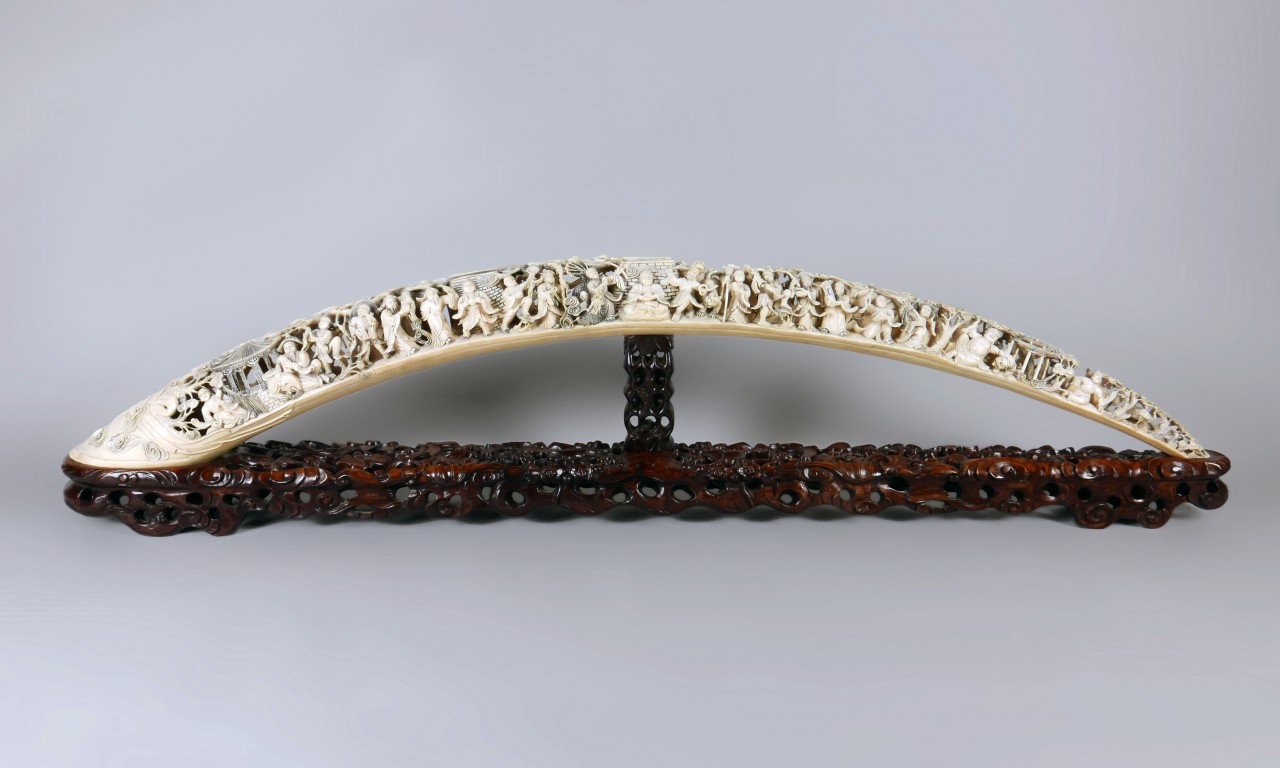 |
34475-34476
Gift of Vernor G. and Edith P. Rich |
Arcing Arhats
There are three ivory objects in the newly reopened Ancient Arts of China exhibition. Two of these will be familiar to visitors to the old exhibition. They are full length tusks which have been intricately carved with openwork figures, animals, buildings, and vegetation. The first is oriented horizontally and has carvings depicting the Buddha surrounded by 19 disciples on one side. Alternatively referred to as Arhats or Luohans, these disciples of the Gautama Buddha have themselves followed the Noble Eightfold Path to achieve Nirvana and release themselves from earthly desires. Interestingly, the number of disciples changed over time from 10 to 16 and then later 18, which came to be the most common number of disciples depicted on Chinese art. Even later additions added up to 108 different followers, meaning that the 19 figures depicted alongside Buddha in this carving is not unorthodox. The opposite side of this tusk depicts dancers and warriors but has otherwise not yet been interpreted.

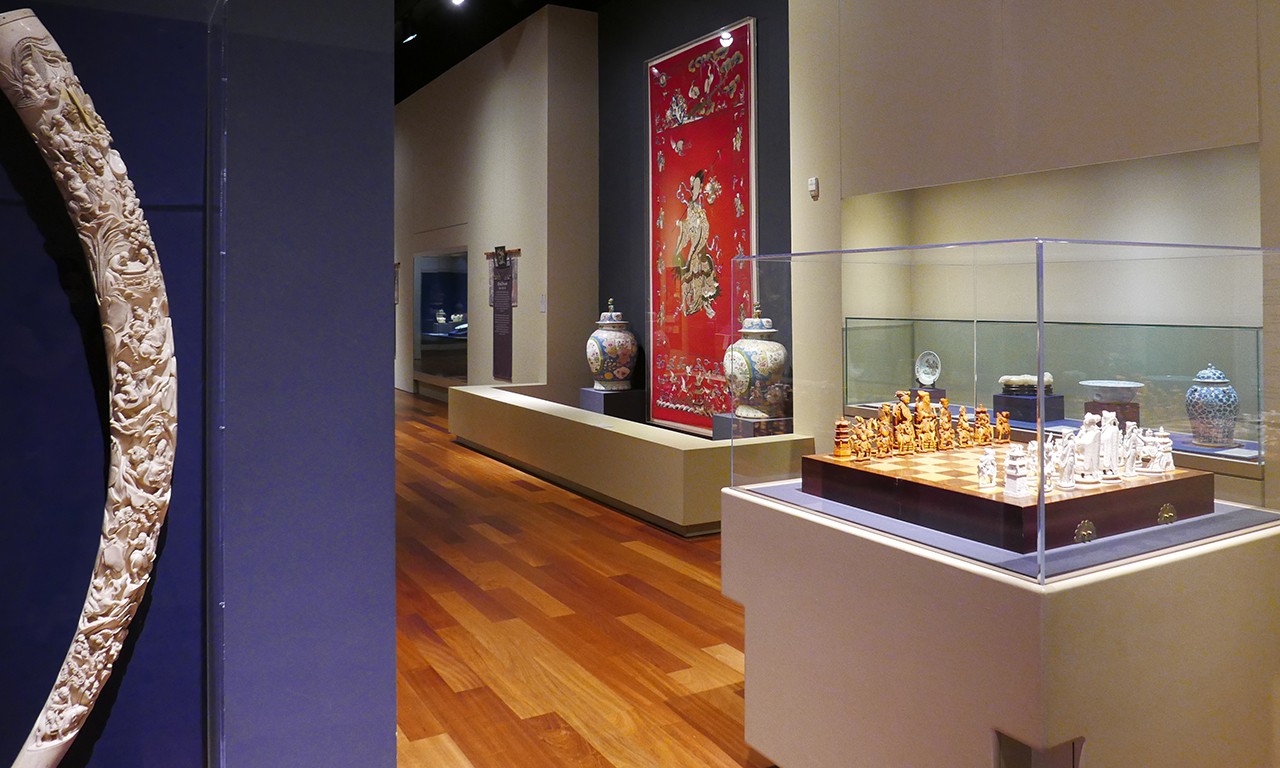 |
Carved Tusk (left), late Qing dynasty to Republic of China (1870-1949)
China
Ivory; 81 1/2 x 74 in.
38167
Gift of Vernor G. and Edith P. Rich |
Inflected Immortals
The other near-complete tusk in the exhibition is vertically oriented and it depicts the Eight Immortals, a popular group which originated from the Taoist tradition during the Jin dynasty. Often appearing as motifs in Chinese art because of their association with longevity, many of these figures also serve as patron deities of sorts:
- Lu Dongbin, the leader of the eight. A scholar and a poet who carries a magic devil-slaying sword.
- Lan Caihe, patron deity of florists, who can make all plants grow.
- Zhang Guolao, patron deity of old age, who rides a donkey which is kept in his pocket when not in use.
- Li Tieguai (Iron Crutch), patron deity of medicine, whose soul found refuge in beggar's body when his own was accidently destroyed.
- Zhongli Chuan, who carries a fan that can make the dead live again.
- Cao Guojiu, patron deity of actors, carries clappers used in opera performances.
- Han Xiangzi, patron deity of musicians, plays a flute, missing here.
- He Xiangu, the only woman of the group, is an expert in the use of herbs; she holds a lotus flower.
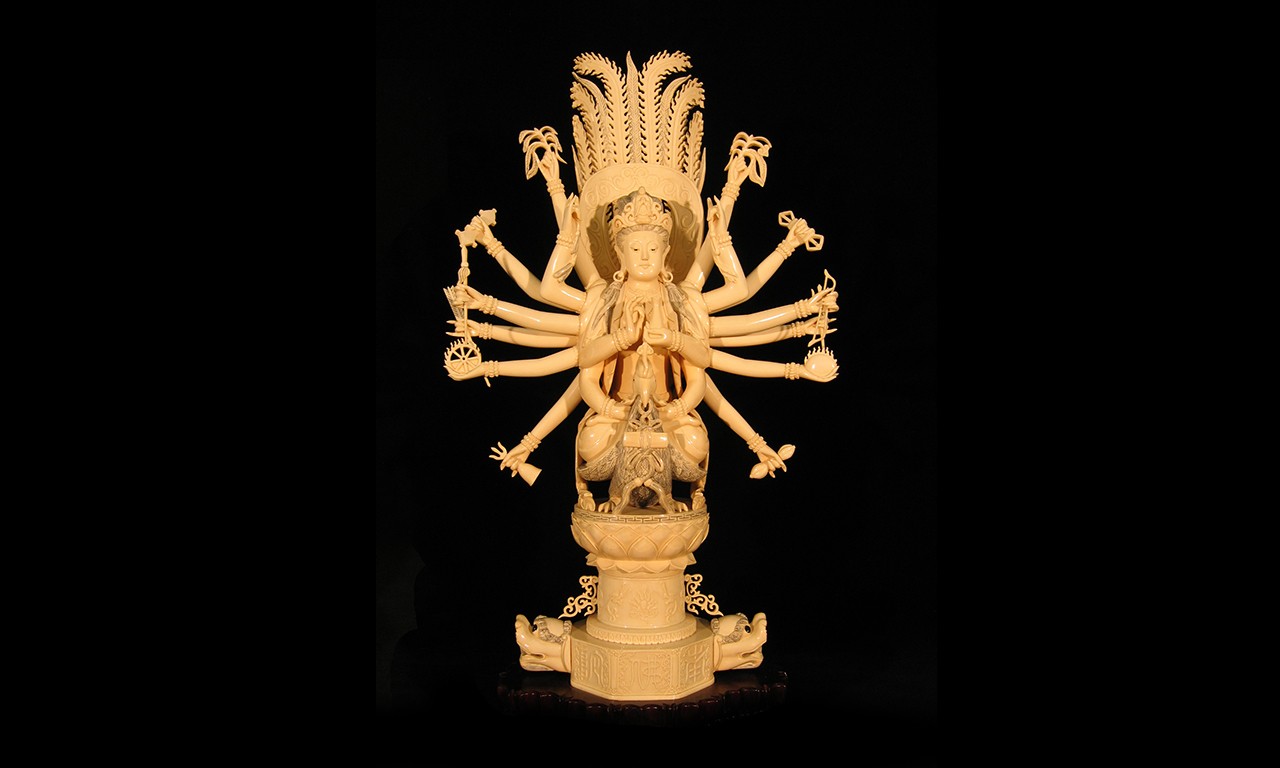 |
Guanyin Figure, Late Qing dynasty to Republic of China (1870-1949)
China
Ivory; 26 x 13 1/2 in.
88.31.1
Anonymous Gift
|
Multitasking Mother
The new addition to the gallery is this sculpture of Guanyin. Already depicted in several forms at the Bowers Museum as outlined in this post, Who Answers the Cries: Guanyin at the Bowers, this new sculpture shows her in another of her 32 forms. This pose is often referred to as the “Mother of the Seventy Million Buddhas" form of Guanyin, one which appears to have been based on the earlier Indian bodhisattva Cundī. In her hands she holds 18 implements and weapons, each of which represent aspects of the Dharma.
Text and images may be under copyright. Please contact Collection Department for permission to use. References are available on request. Information subject to change upon further research.






Comments